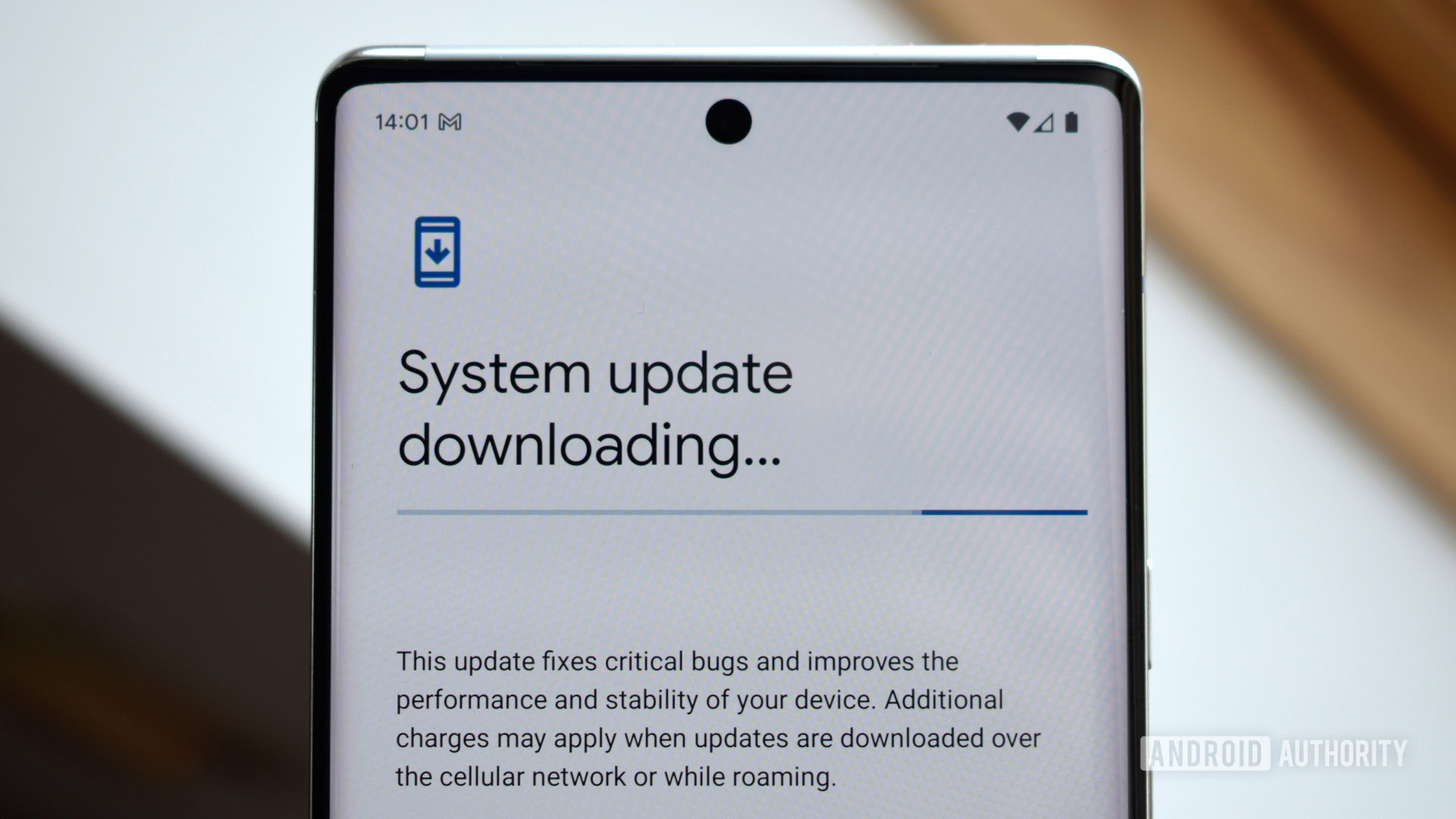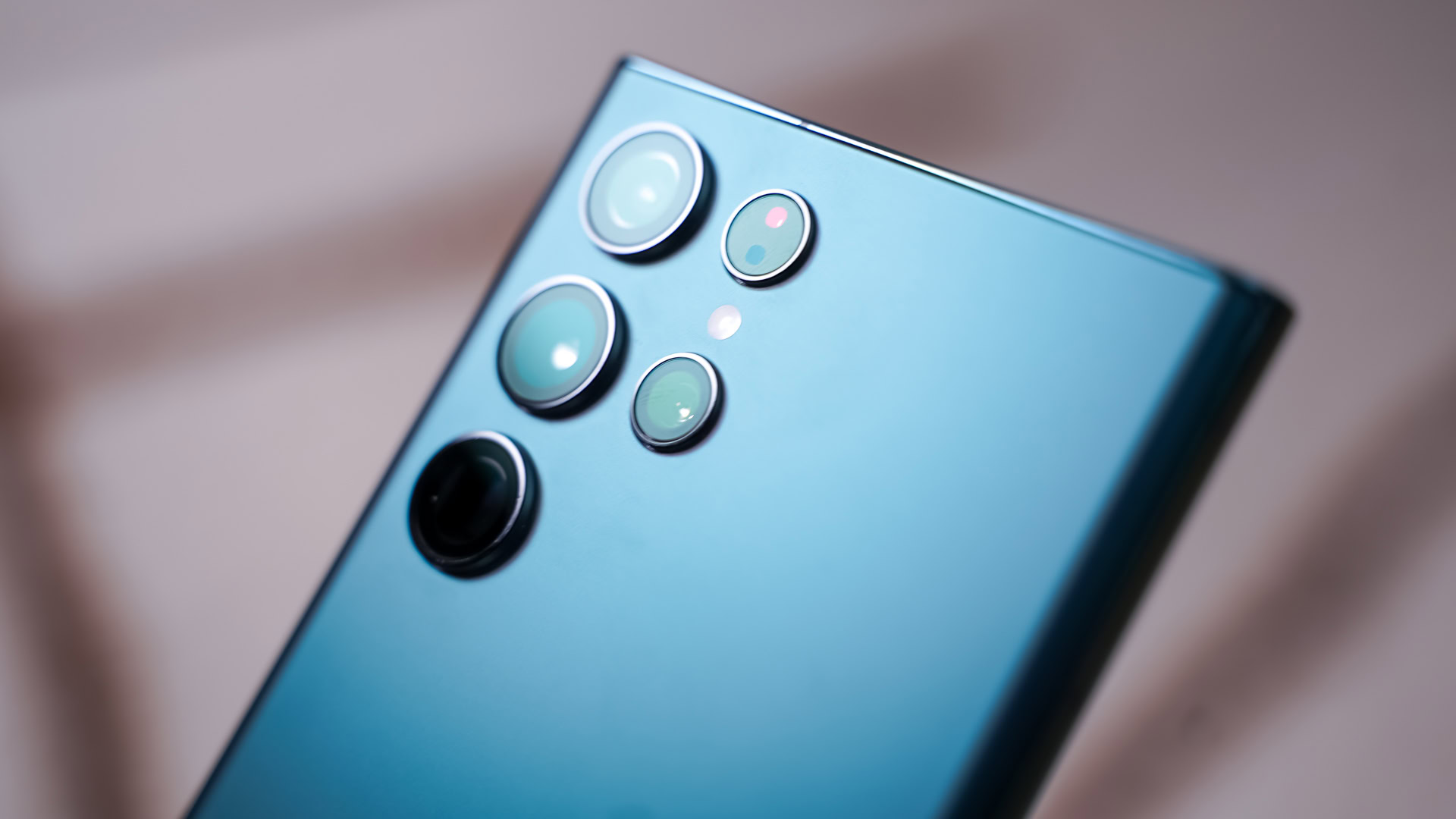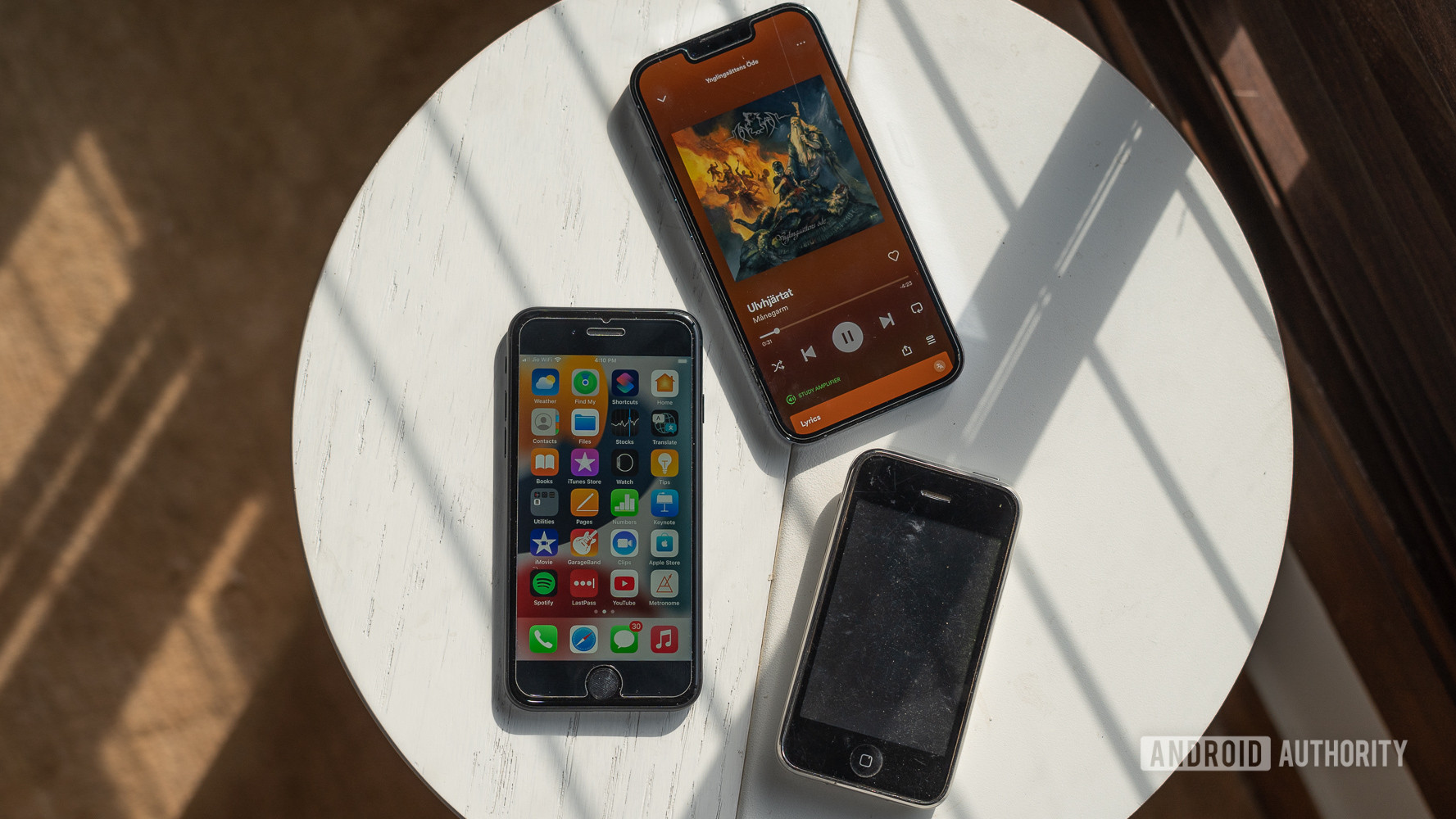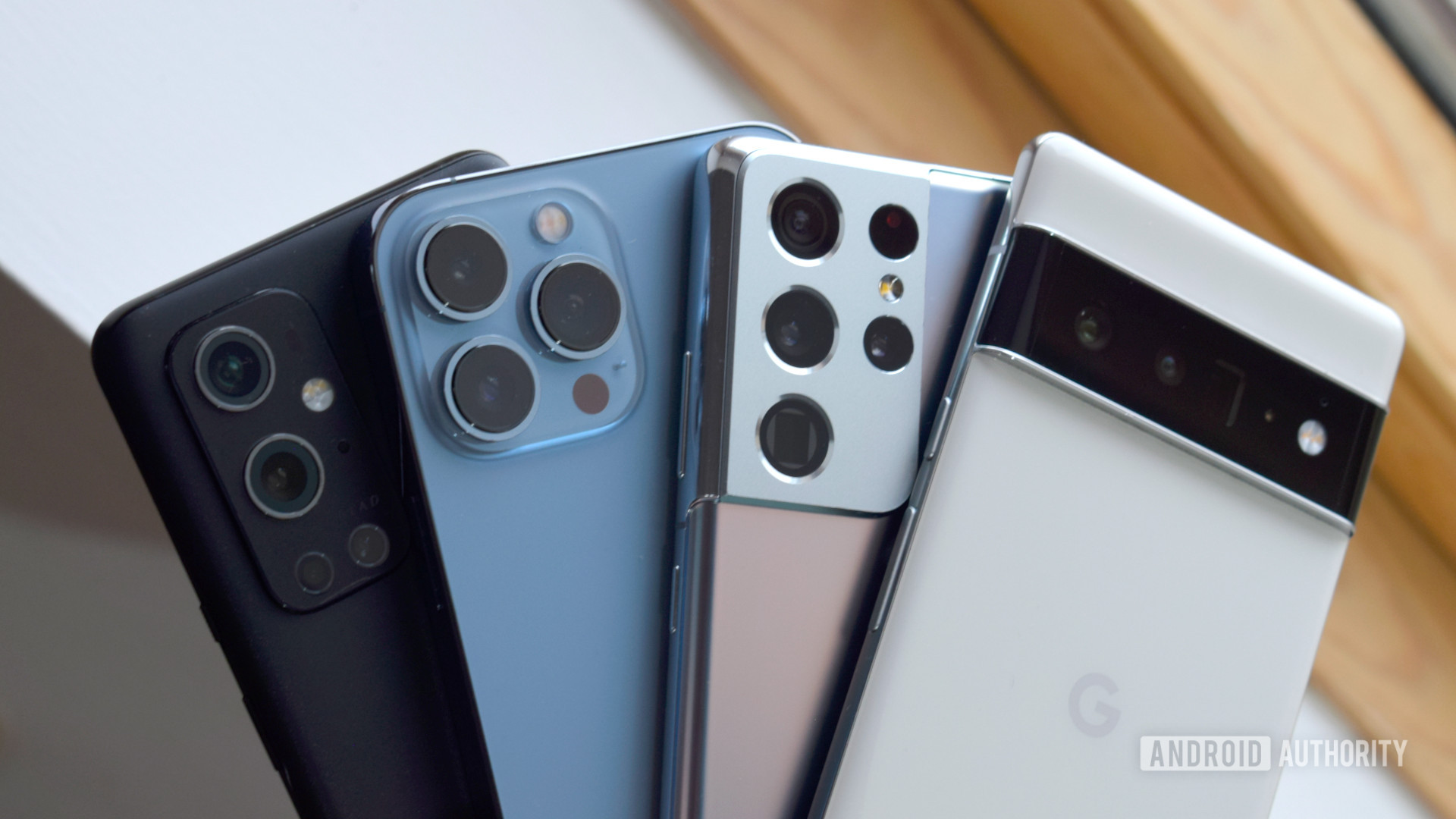Affiliate links on Android Authority may earn us a commission. Learn more.
It's 2022, phones should be built to last five years or more

If you’ve bought a new smartphone recently, hopefully, you’re planning to keep it for a very long time. Modern hardware is more than good enough that it should last many years. Rather than specs falling out of date, a lack of updates or the need to repair a broken screen or battery is likely to be the barrier to realizing this long-term investment. That’s certainly the way the wind of consumer trends is blowing.
According to trade-in data from Hyla Mobile, the average age of a smartphone turned in for trade-in during Q3 2021 was 3.32 years. That’s up from 3.13 years in Q3 2020 and much longer than the 2.36 years in Q3 2016. In other words, the past five years have seen consumers hold on to their phones for virtually a whole year longer on average, ruling out the pandemic or economic causes for a short-term trend.
Consumers are using their phones for longer than three years, requiring security patches and repairs to match.
You probably spotted that consumers keeping their phones for more than three years pushes past the length of time that most manufacturers promise to update their phones. Three years of OS upgrades is still the industry default for flagship phones, but it’s often far less for mid-tier and affordable handsets. Apple and Samsung are the manufacturers offering the best longer-term support. Samsung promises four years of OS and five years of security upgrades for its recent flagship and mid-tier handsets, which should last a handset for its entire lifecycle. Other brands are not so committed to the long-term.
Read more: Google just surrendered its update authority to Samsung
With consumers keeping increasingly personal and sensitive data on their devices, including biometric and banking info, the need for smartphones to be kept secure for as long as they’re in use goes without saying. But brands should look beyond basic security patches, ensuring that smartphones remain up to date with the latest and greatest features throughout their lifecycle. Combined with better repair services, modern smartphones should be expected to last closer to five years than two. Unfortunately, very few brands come close to meeting these criteria.
Several key topics explain why consumers have been holding onto their phones for longer and why longer-term software and repair support is now more important than ever. So let’s explore them in more depth.
Moore’s law and the silicon lottery

Performance is arguably the main historical driving force used to justify a new smartphone purchase. But the occasionally laggy chip is well in the rear-view mirror. Any flagship smartphone from the last three or four years and mid-range models from the last couple still performs as well as ever for the vast majority of mobile tasks. Instead, other components, such as the battery, show their age far more quickly.
You only have to look at Android Authority’s benchmarks for the latest Qualcomm Snapdragon 8 Gen 1 and Samsung Exynos 2200 system on chips (SoCs) to see the lack of meaningful gains this year. Granted, modern chipsets have long been about a heterogeneous approach to computing rather than single-component solutions. But whether you’re looking at AI or imaging processing, it’s hard to argue that 2022 smartphones are miles ahead of their predecessors.
Processing capabilities are hitting the wall regarding what can be accomplished in a mobile form factor and power budget. Increasing incidents of performance throttling reveal that sought-after CPU and GPU performance gains are increasingly unsustainable without serious cooling. Likewise, power consumption has repeatedly been spotted north of 10W bursts, well outside the form factor’s historic 5W total.
If performance is already more than “good enough” and increasingly contained by the form factor, perhaps chip designers should focus on efficiency and long-term support rather than chasing increasingly difficult gains.
There are still further improvements on the horizon, of course. Moore’s law continues to tick along or thereabouts, taking 2.5 years or so to double chip transistor density. Chip manufacturers are on track to hit 3nm and below in the coming years, with promises of 1.7x density and 15% energy improvements or more with each generation. However, the drive for more powerful, cutting-edge silicon has also been behind the steep rise in handset prices.
Cutting edge silicon is expensive yet if offers diminishing returns for smartphones
The move to EUV lithography, essential for hitting 5nm and below, is not cheap and although yields seem acceptable, the additional development and tooling expenses incur a considerable cost for cutting-edge performance. According to one estimate, developing a 28nm design costs $10 to $35 million, compared to $120 to $420 million for a 7nm design.
This situation only looks to become more expensive in the near term. TSMC is raising its prices by 10-20% in 2022, owing to a combination of supply crunch and other contracts. Paired with the added expense of 5G radio and other components accompanying today’s high-end chipsets, SoCs have grown to a major cost of a smartphone bill of materials.
Whether this expense is worth the increasingly marginal performance gains for smartphones is not so clear-cut. Taken on the whole, we’ve reached the point where chips that last consumers a long time are more important than a few more percentage points on a synthetic benchmark.
Innovation slows, yet prices are at all-time highs

Seemingly slow innovation isn’t limited to silicon. The needle for excellent smartphone audio, cameras, displays, haptics, and countless other features has not moved drastically in the past few years. Even 5G hasn’t turned out to be the game-changing feature it was hyped up to be. Charging is the only arena touting bigger numbers year on year. But even here, we’ve seen marginal real improvements to charge time and the far more important screen on time.
This isn’t to say that smartphones are devoid of yearly improvements; those can be found across all facets, from camera to displays. Rather, these improvements are less experience-defining and more incremental than five years ago. Phones are aging better and improving less noticeably these days, plus those small improvements are costing more and more to obtain.
The best camera phones are still expensive, but phones like the Pixel 6 come close at half the price.
Cameras are a great example of this. The limited space for larger image sensors, combined with the expense of high-quality multi-lens systems, has led to a dearth of hardware improvements over the past two or three years. Even Sony’s exceedingly expensive photography-focused Xperia Pro I failed to deliver a knockout blow against more tried and tested camera formulas. At the same time, computational photography has helped companies do more with less, see Google’s Pixel 6 series, further diminishing the desire or need for the most expensive camera hardware.
The market is caught between two opposing forces. On the one hand, the drive for flagship innovation has pushed prices up to their highest levels. Flagship smartphones can retail in excess of $1,400, having only passed the $1,000 mark in 2018. On the other, consumers continue to demand value for money, as seen by downward price pressure on Samsung’s recent Galaxy S22 handsets and the popularity of second-hand sales.
Smartphone are simply aging better than they ever have.
Either way, few consumers can afford to spend more than $1,000 on a flagship smartphone every two years, and there’s little incentive to do so when handsets are aging better than ever. Another key reason for manufacturers to support smartphones for as long as users intend to keep them.
The rise of the eco-conscious

If you’re not convinced by the economic benefits of long-use smartphones, perhaps the growing ecological argument will be more persuasive. Research from the United Nations University (UNU)/United Nations Institute for Training and Research (UNITAR) in 2020 makes for some alarming reading.
The last count in 2019 revealed that electronics generated 53.6 million tonnes of e-waste globally. Europeans produced the most waste at 16.2kg per person compared to America’s 13.3kg. The amount is expected to grow to 74 million tonnes globally by 2030.
E-waste is expected to grow to 74 million tonnes globally by 2030.
Importantly, e-waste comprises precious metals, such as copper and gold, and critical raw materials like cobalt and palladium. These are expensive and finite resources that are labor intensive to extract and refine. According to the report, the world consumed 39 million tonnes in raw metals for electronics in 2019, but could obtain up to 25 million tonnes of this from e-waste in an idealized scenario.
There’s a financial incentive to recycle too. The cost of e-waste in raw materials was calculated at around $57 billion in 2019. $47 billion worth (83%) was never recycled, a value that would be enough to outbid Elon Musk for Twitter.
Of course, smartphones only account for a small portion of this total waste. Even so, alarming trends have prompted the European Commission to clamp down on the e-waste generated by charging products. The block is looking to force USB-C port adoption for all new devices. Phone manufacturers have cited similar concerns when dropping charging bricks from their boxes. That said, plenty of brands feign eco-consciousness while doing very little to improve long-term support for their products.
Right-to-repair and long-term update support go hand in hand.
While recycling and reclaiming these finite resources is already a noble enough aim, an easy and free way to reduce the problem is simply using our gadgets for longer before replacing them.
The growth in self-repair schemes from Apple and Samsung makes this more viable than in previous years. Replacing an aging battery and broken display can give phones a new lease of life for a fraction of the cost and resources of a new model. That said, there’s plenty more that these companies and others could do to build more repairable devices and make spare parts more readily accessible. The current range of supported handsets and parts from official repair schemes is far too limited to bring us into a world where long-term repairs are the norm. But tentative steps are heading in the right direction, at least from some manufacturers.
Read more: Self-repair programs aren’t a right-to-repair victory, here’s why
Phones should be built to last five years or more

In 2022, there’s now a multifaceted argument in favor of a new approach to smartphone manufacturing. One which focuses on long-term support for both hardware and software.
Core to this line of thinking is that smartphone hardware has hit a plateau. From the mid-range to flagships, hardware is now more than powerful enough to last several years without going obsolete. The days of rampant year-on-year improvements are long gone, whether you’re looking at bleeding-edge performance, cameras, or battery life. This isn’t to say we don’t yearn for those yearly gains, but they no longer suddenly mark older models for obsolescence even if they materialize. As such, modern smartphones deserve long-term software support above and beyond semi-annual security patches.
Between the hardware plateau, e-waste, and right to repair arguments, long-term support is more necessary than ever.
Not to mention the increasingly compelling sustainability and right-to-repair arguments regarding raw materials and e-waste. It’s increasingly hard to justify the production of throwaway electronics built to last just a handful of years. Simultaneously, sky-high prices and a squeeze in the cost of living have cast new light on the need for easier access to repair programs and spare parts. Not forgetting the popularity of refurbished handsets.
Long-term support doesn’t have to be an unprofitable venture for smartphone manufacturers either. Official repair channels bring in revenue over time, and it’s possible to factor long-term support into the retail price of a handset. Then there’s the whole avenue of hardware-as-a-service to explore. However, whether or not smartphone manufacturers will come around to this line of thinking remains to be seen. Only pressure from customers and pundits will likely persuade them of the need to and value in supporting their products for as long as possible.